
The Satyrini is one of the tribes of the subfamily Satyrinae. It includes about 2200 species and is therefore the largest tribe in the subfamily which comprises 2500 species.

Acontiinae is a subfamily of bird dropping moths in the family Noctuidae. There are more than 50 genera and 430 described species in Acontiinae, found worldwide in temperate and tropical climates.

The Pyralinae are the typical subfamily of snout moths and occur essentially worldwide, in some cases aided by involuntary introduction by humans. They are rather rare in the Americas however, and their diversity in the Australian region is also limited. Altogether, this subfamily includes about 900 described species, but new ones continue to be discovered. Like many of their relatives in the superfamily Pyraloidea, the caterpillar larvae of many Pyralinae – and in some cases even the adults – have evolved the ability to use unusual foods for nutrition; a few of these can become harmful to humans as pests of stored goods.

Though small in absolute diversity of genera, the Hemitheini are nonetheless the largest tribes of geometer moths in the subfamily Geometrinae. Like most Geometrinae, they are small greenish "emerald moths". The tribe was first described by Charles Théophile Bruand d'Uzelle in 1846.

Drepanogynis is a genus in the geometer moth family (Geometridae). Long considered to hold about 5 dozen species, this number has been doubled after the last major revision. They are stout-bodied and hairy by geometer moth standards, usually have pale hindwings and rest with their wings angled upwards like a roof, as Nacophorini do. The genus is by and large restricted to Africa south of the Equator, with most species occurring in southern Africa.

Dysphania is a genus of colourful moths in the family Geometridae and typical of the tribe Dysphaniini; they are sometimes called 'false tiger moths' and are found in northeast Australia, Melanesia, and south, east and southeast Asia.

Hypodoxa is a genus of moths in the family Geometridae described by Prout in 1912.
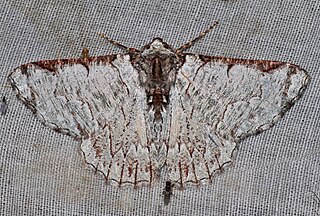
Lophophelma is a genus of moths in the family Geometridae described by Prout in 1912.
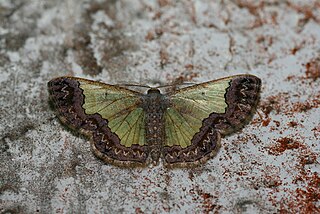
Zamarada is a genus of moths in the family Geometridae, first described by Frederic Moore in 1887. The species type is Zamarada translucida. Over 250 species and 35 subspecies have been listed.

Sterrhinae is a large subfamily of geometer moths with some 3,000 described species, with more than half belonging to the taxonomically difficult, very diverse genera, Idaea and Scopula. This subfamily was described by Edward Meyrick in 1892. They are the most diverse in the tropics with the number of species decreasing with increasing latitude and elevation.

Asthenini is a tribe of geometer moths under subfamily Larentiinae first described by Warren in 1893. The tribe has been combined with Eupitheciini in the past, most notably by Jeremy Daniel Holloway in his work The Moths of Borneo.

Eupitheciini is a tribe of geometer moths under subfamily Larentiinae, often referred to as pugs. The tribe was described by Tutt in 1896.
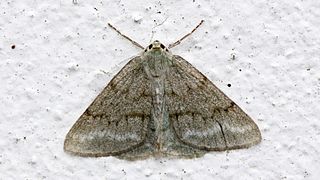
The Pseudoterpnini are a tribe of geometer moths in the subfamily Geometrinae. The tribe was described by Warren in 1893. It was alternatively treated as subtribe Pseudoterpniti by Jeremy Daniel Holloway in 1996.
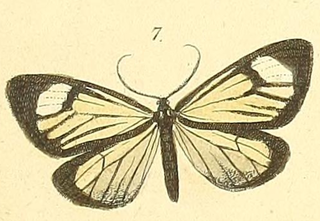
Monocreagra pheloides is a moth of the family Notodontidae first described by Cajetan and Rudolf Felder in 1874. It is found in Colombia, Ecuador and Peru.
William Warren was an English entomologist who specialised in Lepidoptera.
Rhodostrophiini is a tribe of the geometer moth family (Geometridae), with about 200 species in 17 genera and five genera tentatively associated with the tribe.
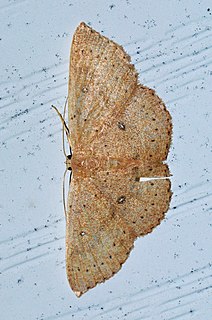
Cosymbiini is a tribe of the geometer moth family (Geometridae), with about 515 species in 11 genera, and 5 genera with 170 species tentatively associated with the tribe.

Sterrhini is a tribe of the geometer moth family (Geometridae), with about 825 species in 19 genera. There are also 6 genera with 36 species tentatively associated with the tribe. The tribe was erected by Edward Meyrick in 1892.
Venusia megaspilata is a moth in the family Geometridae first described by William Warren in 1895. It is found in Japan and Korea.
Caberini is a tribe of geometrid moths in the family Geometridae. There are at least 50 described species in Caberini.














